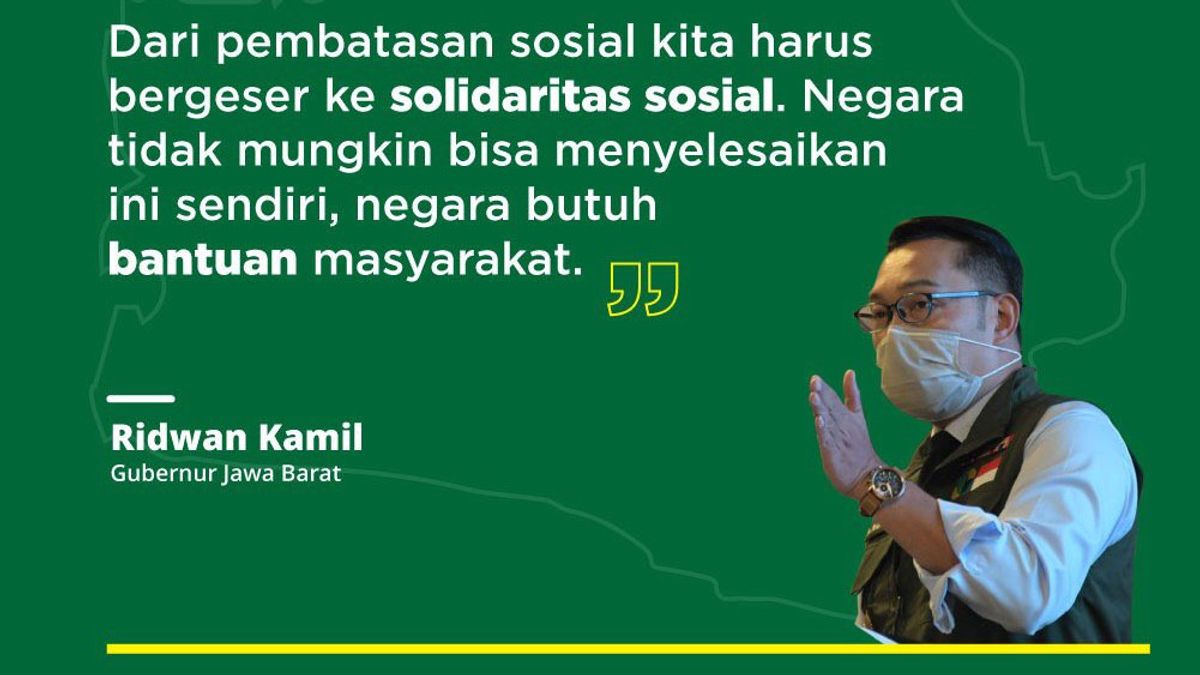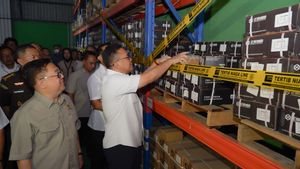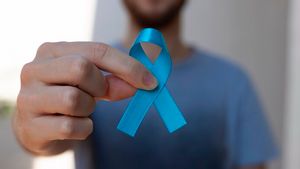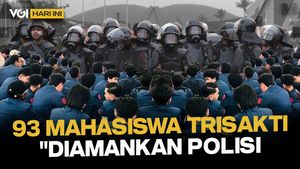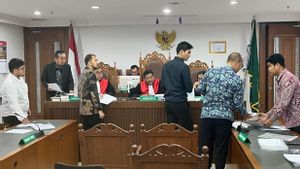JAKARTA - The implementation of Large-Scale Social Restrictions (PSBB) in West Java Province since 6 May will end on 19 May. In the future, West Java Governor Ridwan Kamil will relax the economic restriction policy in a number of regions.
The relaxation that will be carried out covers 63 percent of the areas in West Java. Thus, only 37 percent of the area remains that need to be watched out for the spread of COVID-19. However, he did not specify which areas would be loosened and which needed to be watched out for.
"There are 63 percent of them in the safe and controlled range. So, post-PSBB, we can carry out economic relaxation, live back to normal but with restrictions," Ridwan Kamil said as broadcast on the BNPB Indonesia Youtube account on Saturday, May 16.
The reason the man who is familiarly called Kang Emil is planning to relax a number of areas because the results of the provincial-scale PSBB evaluation look encouraging. Prior to PSBB, daily cases in West Java reached around 40 cases per day. After the PSBB took place, the number of cases decreased.
"In recent days, (the addition of cases, red) has dropped to 21-24 cases per day," said Emil.
Then, in April, there were around 430 patients infected with the corona virus. Meanwhile, now it has decreased to around 350 patients.
He continued, before the PSBB period, the death rate for COVID-19 patients reached 7 people per day, after PSBB became 4 people per day. Then, there is an increase in the recovery of corona virus patients at this time to almost double from before the PSBB.
Three Handling Strategies Ala Kang EmilThe former Mayor of Bandung explained that there are three strategies used in West Java to deal with the COVID-19 outbreak. "The first strategy is a fortress of deterrence, the second is a bulwark of tracking and testing, and the third is a fortress of maintenance," he explained.
First, at the bastion of prevention, West Java implements PSBB, prohibits homecoming, and implements health protocols such as social distancing and physical distancing.
Emil admitted that his party relies more on social capital than material. This is because, if you look at it, the population in West Java and South Korea is the same as 50 million people. However, the budget for handling COVID-19 in West Java is only 1 percent of South Korea's total budget.
"So, our capital is only discipline. Before the vaccine was discovered, our strategy was to prevent it with a formula where there is a crowd, so there is COVID-19, where there is no crowd, there is no COVID-19," Emil said.
At the tracking and testing bastion, West Java has carried out examinations of more than 110 thousand people, which are divided into RT-PCR and rapid tests. There are 9 laboratories that already have more complete technology than before the PSBB, which previously could drop 140 samples, now it has increased to 2100 samples per day.
"Those who take the test are classified into the most vulnerable groups, namely PDP and their families and their closest contacts. Then, health workers to doctors, then professions that are prone to interacting with crowds," Emil explained.
The target of West Java is to follow the examination model in South Korea, which is 0.6 percent of the total population of COVID-19 checks. If calculated, the target for inspection is up to 300 thousand people.
However, until now, West Java is still conducting tests on 110 thousand people. "We still have shortcomings. With the help of BNPB, we hope that in the near future we can carry out testing up to 300 thousand," he said.
Meanwhile, at the fort of treatment, Emil prepared 105 COVID-19 referral hospitals in West Java by providing locally made ventilator equipment to make up for existing shortcomings.
The English, Chinese, Japanese, Arabic, and French versions are automatically generated by the AI. So there may still be inaccuracies in translating, please always see Indonesian as our main language. (system supported by DigitalSiber.id)
